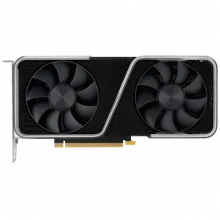
Updating your GPU (Graphics Processing Unit) drivers is essential to ensure your graphics card operates optimally, provides better performance, and supports the latest features and games. Here's a step-by-step guide on how to update GPU drivers:
-
Identify Your GPU Model:
- Before updating, identify your GPU model. You can do this by right-clicking on the desktop, selecting "Display settings," and scrolling down to "Advanced display settings." Your GPU model should be listed there. Alternatively, use GPU-Z or system information tools like CPU-Z or Speccy.
-
Visit the GPU Manufacturer's Website:
- Go to the official website of your GPU manufacturer. NVIDIA, AMD, and Intel are the primary GPU manufacturers.
-
Download the Latest Drivers:
- Navigate to the "Drivers" or "Support" section on the manufacturer's website.
- Enter your GPU model or use the website's automatic detection tool to find the appropriate drivers.
- Download the latest driver version for your GPU. Make sure to choose the correct operating system (e.g., Windows 10 64-bit).
-
Uninstall Old Drivers (Optional, but Recommended):
- Before installing new drivers, it's a good practice to uninstall the old ones to avoid potential conflicts.
- Open the "Device Manager" by right-clicking on the Start menu and selecting it.
- Expand the "Display adapters" category, right-click on your GPU, and select "Uninstall device."
- Check the box that says "Delete the driver software for this device" and click "Uninstall."
-
Install New Drivers:
- Run the downloaded driver installer.
- Follow the on-screen instructions to install the new drivers.
- Restart your computer if prompted.
-
Verify the Installation:
- After the restart, confirm that the new drivers have been successfully installed. You can do this by checking the GPU model in "Display settings" or by using GPU-Z.
-
Configure GPU Settings (Optional):
- Access your GPU's control panel (NVIDIA Control Panel, AMD Radeon Settings, etc.) to customize graphics settings to your preference.
-
Regularly Check for Updates:
- Make it a habit to periodically check for GPU driver updates, as new versions are released regularly.
Updating GPU drivers is crucial for maintaining system stability and maximizing graphics performance. By following this guide, you can ensure your graphics card is running with the latest and most compatible drivers available.